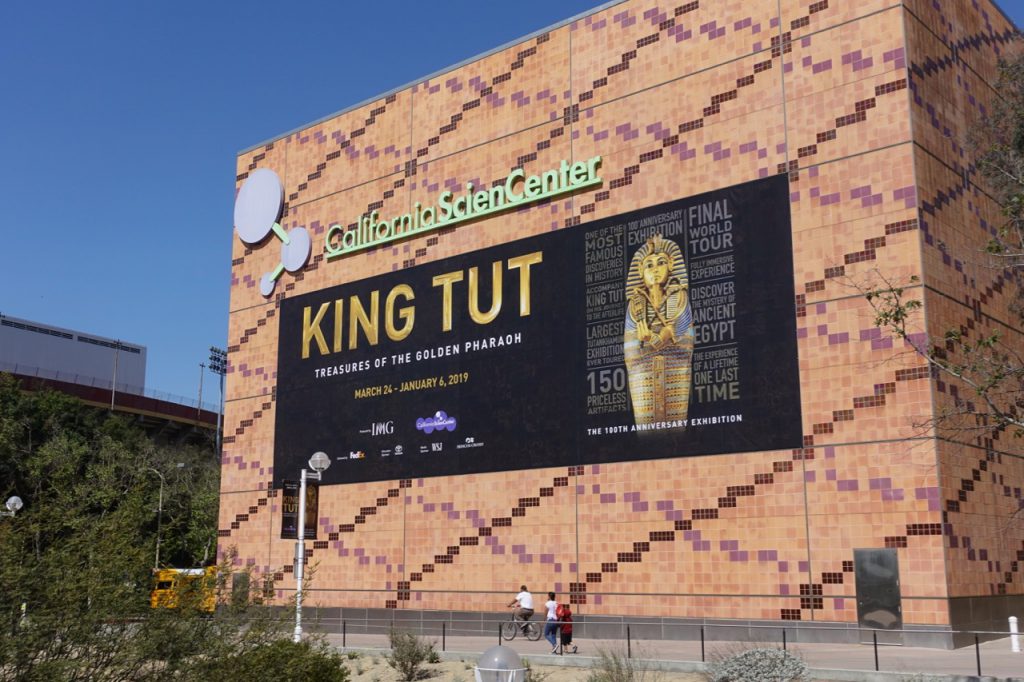
Is there anything left to discover? One hundred years ago, most Egyptologists believed that the Valley of the Kings held not one piece of undiscovered treasure. Then an 11-year-old Egyptian boy hired to carry water to the work site, an archeologist, his wealthy benefactor, and an army of Egyptian workers proved them all wrong.
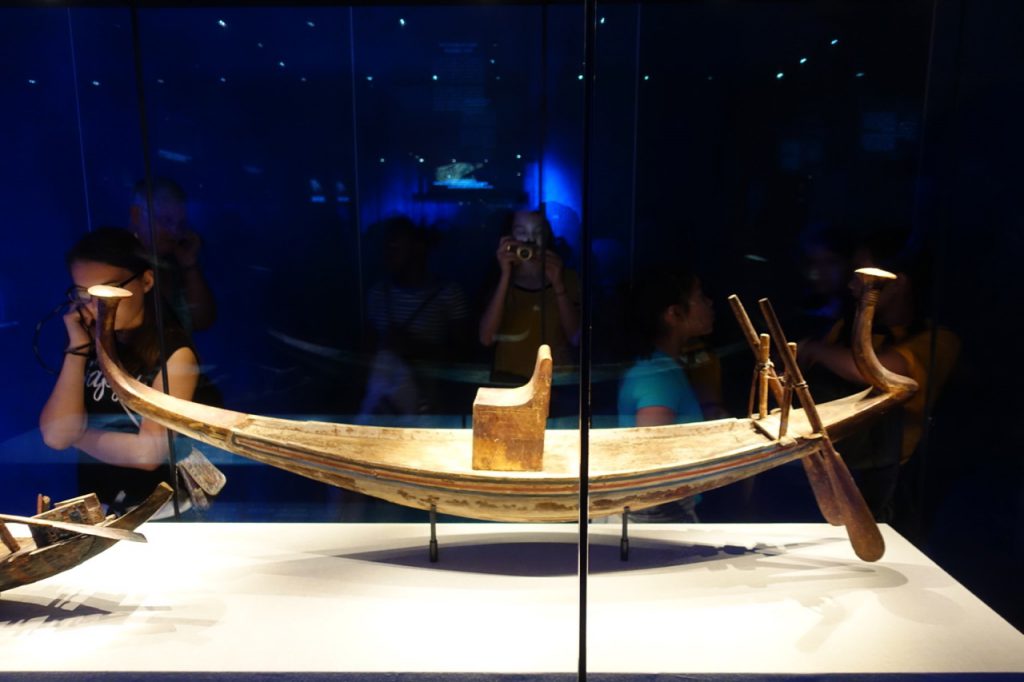
King Tut: Treasures of the Golden Pharaoh offers a once-in-a-lifetime excuse to pack a lunch, jump on the Expo line and trail through the Rose Garden to the California Science Center.
The exhibit, the largest ever to leave Egypt, includes more than 150 objects from the tomb of the young Pharaoh Tutankhamun—featuring 60 that have never been displayed outside of Egypt.
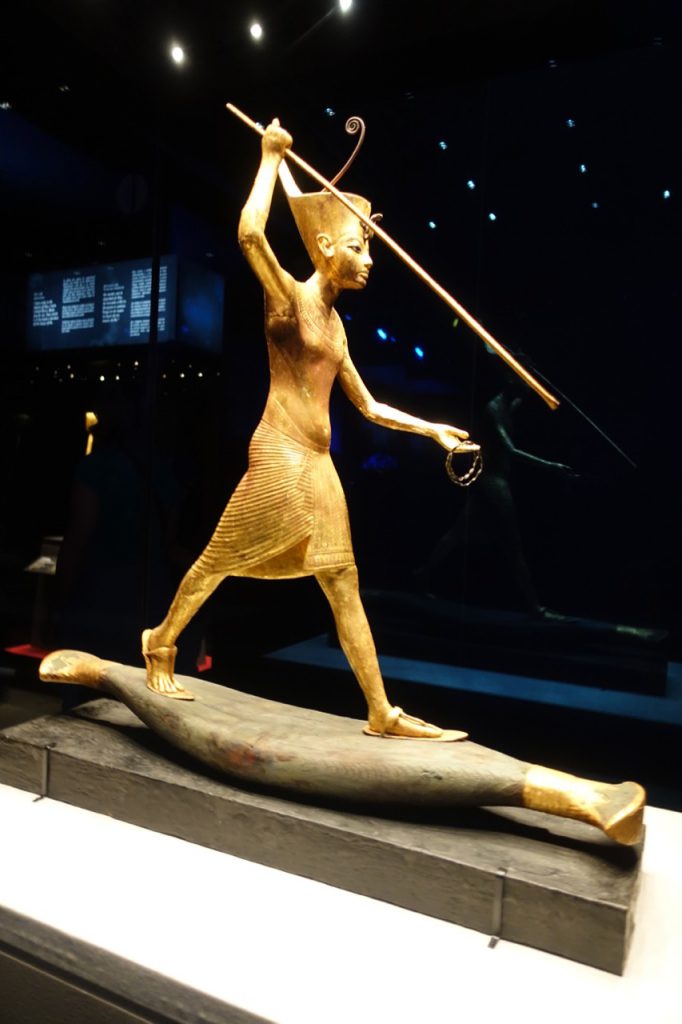
I bought 11:45 a.m.tickets—tickets are required and advanced purchase recommended—which gave my two girls and I plenty of time to get to the train platform in Culver City after leaving our house in Culver 10:15 and parking at a Metro lot near the train. The Expo line train runs all the way from Santa Monica to the 7th St. Station in DTLA and come every 10 minutes and the ride from Culver is less than 15 minutes to Expo Park. Taking the train cuts out the traffic variable and parking so we had plenty of time to arrive (and hit the bathroom) for our entry to Part 1 of the exhibit on the third floor.
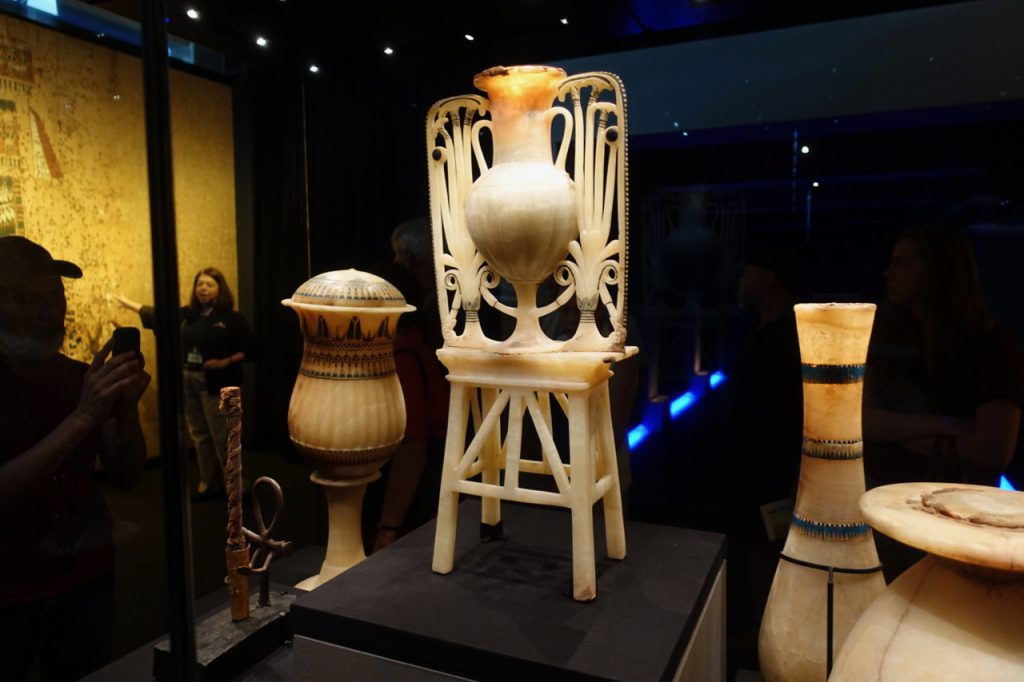
Part 1 takes you on a journey through King Tut’s entombment and his many preparations for the perils and glories of the afterlife. The 6-foot guardian of Ka statue, a 16-inch coffinette for the pharaoh’s liver, and a golden cross bow are among the standouts.
We opted not to get the guided headphone tour, but I did see many kids wearing the headphones, happily bouncing around/interacting with the exhibit this way (might be worth it if your kids are not the stop-and-read-every-placard type). Going through takes about an hour and by the end, I’d wished I’d spent the $6.
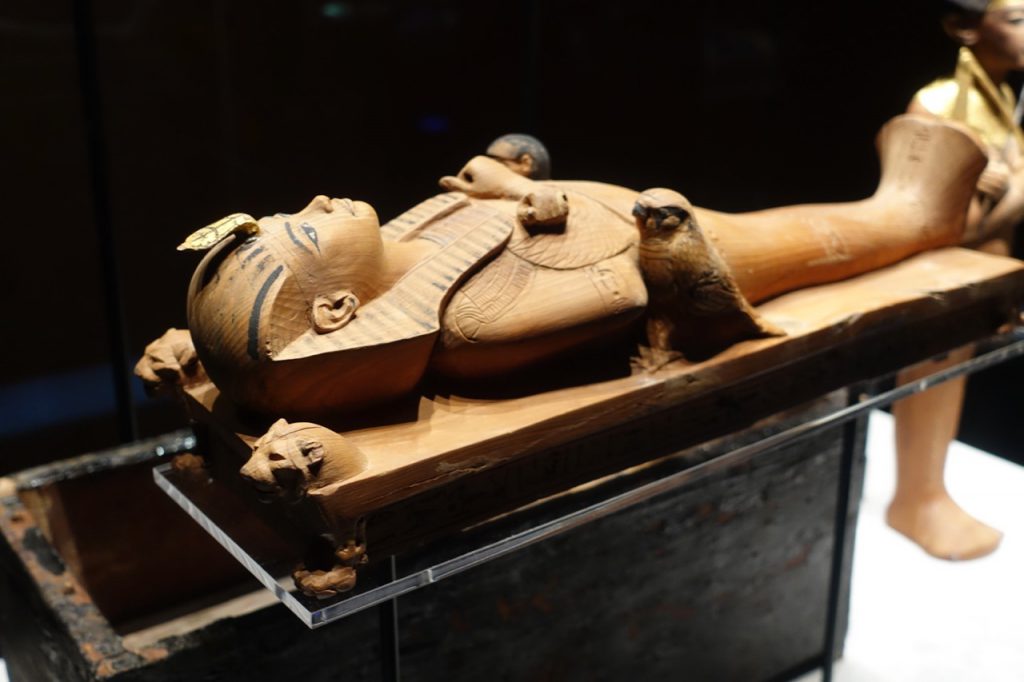
But the placards are good! At the top of most of the 3,300-year-old offerings to gods, food, golden adornments, statues, and weapons, are corresponding spells priests would have read from the Book of the Dead, a collection of almost 200 spells gathered over centuries from Egyptian civilization.
“The word for spell meant ‘utterance.’ The written word carried authority but to make spells effective, words had to be spoken out loud. Magic was as essential to Egyptian life as air, water, or food. The magic of words empowered the deceased. By naming the supernatural demons he met in the Netherworld and answering their questions, he was able to control them. The act of speaking aloud the name of the deceased restored him to life and, if repeated daily, guaranteed his immortality.”
Spell 22 – My mouth has been given to me that I may speak with it in the presence of the Great God.
The high priest would have read this spell as he closed the tomb and offered liquids to the gods in ritual vessels to give the pharaoh back his five senses for the afterlife.
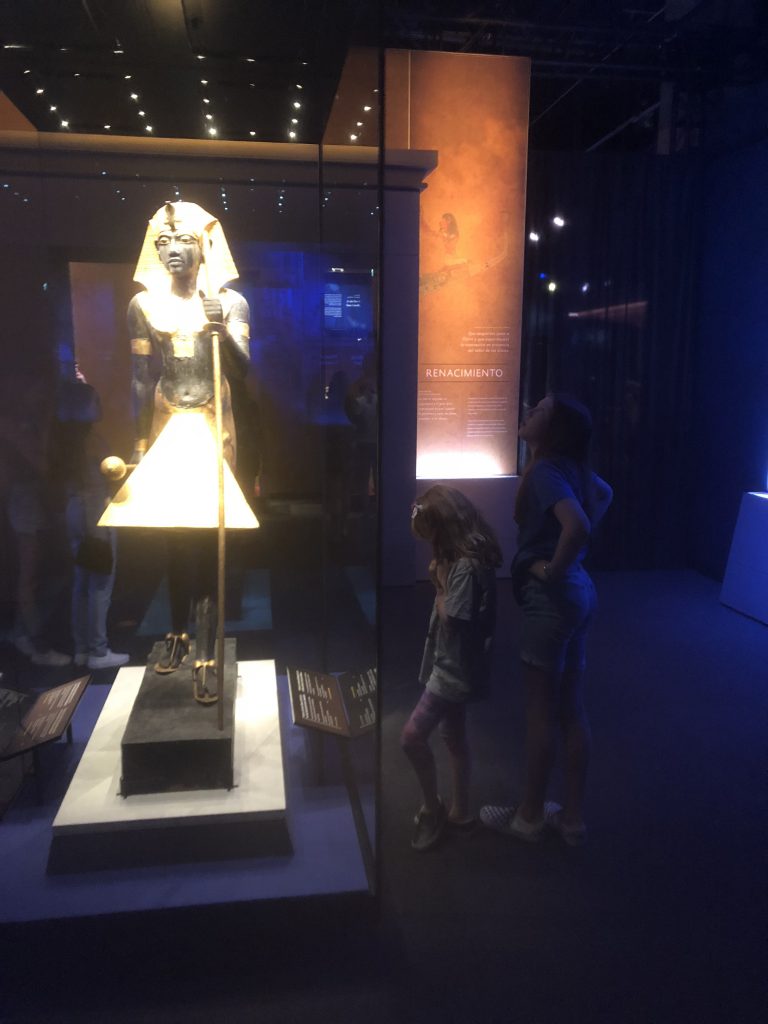
To my girls—and even most that have read all the Rick Riordan’s Kane Chronicles—this is new information. The exhibit does such a beautiful job breaking down the Egyptian concepts of Gods, spiritual equilibrium (Maat), and the soul—and why King Tut’s objects are important to each.
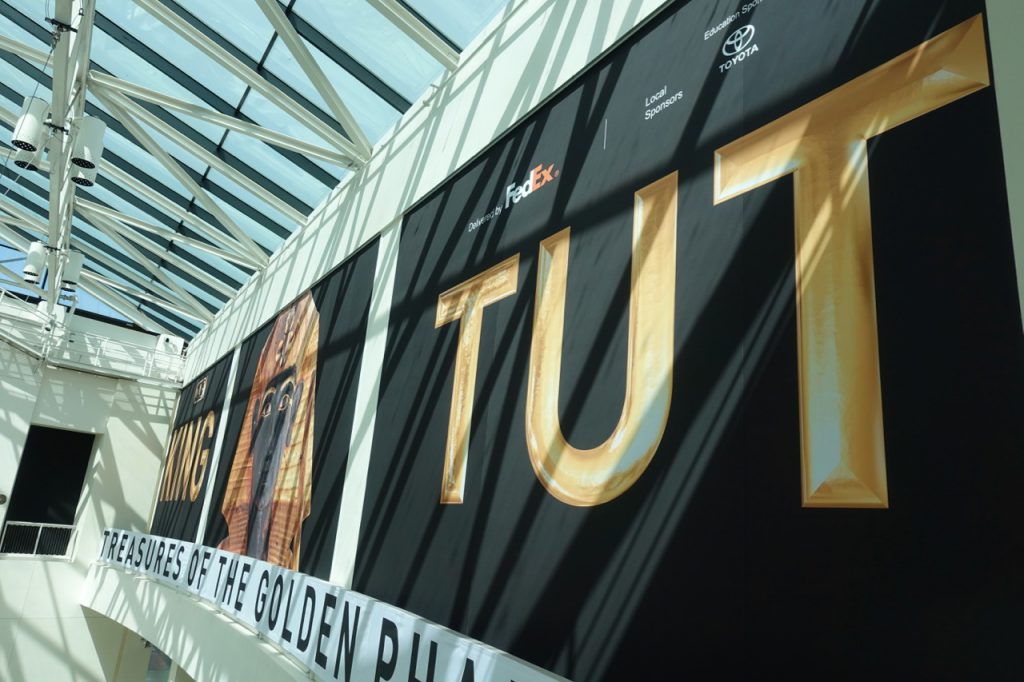
We had a quick lunch at the tables next to the cafe and then went through Part 2 of the exhibit on the first floor. Part 2 is all discovery and adventure—the most complete discovery of a Pharaoh’s tomb in history. This room is smaller, but packed with facts, including the tale of the mummy’s curse.
The girls really loved this section, likely because the whole discovery of King Tut’s tomb hinged on an 11 year old boy who was looking of a place to secure a large water jug for the workers.
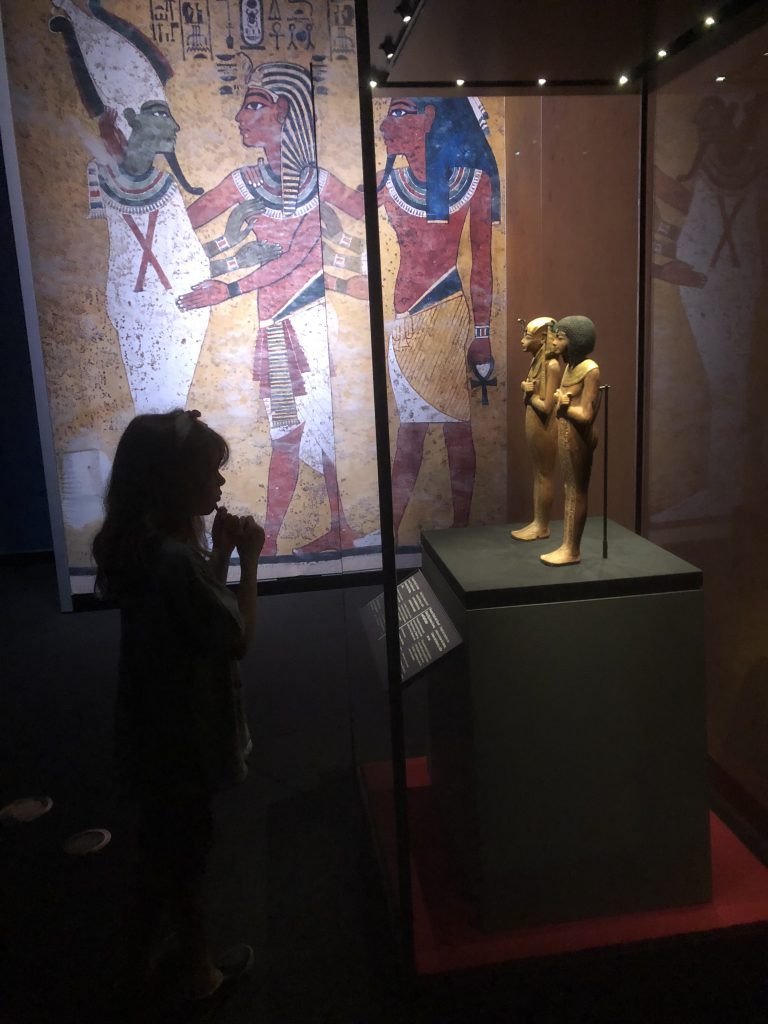
Why were all the archeologists, Egyptologists and workers men? A lot has changed in 100 years. At the top of the escalators on the second floor are 30 large photographs by Gil Garcetti of modern Egyptians, including women, working to preserve pieces of the collection as it’s prepared for shipping.
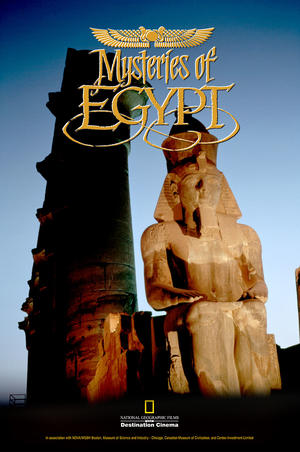
After Part 2, we rushed over to the IMAX theater to buy popcorn and see the “Mysteries of Egypt.” This film really enhances a child’s experience of the Tut Exhibit, providing them a sense of Egypt as place. How could my 7 year old understand the millennia-old influence of the Nile on history without seeing it rage on a 7-story screen? Maybe she could, but the movie helped her a lot.
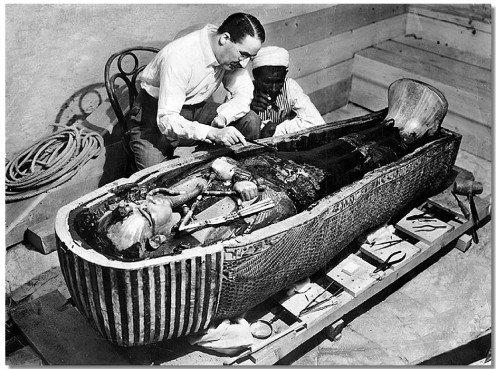
Talking points:
- Mass communication also played a part in King Tut’s fame. In 1922, conglomerate newspapers and radio made the discovery an international sensation. In the 1970s, a traveling exhibit created a King Tut craze for a new generation.
- From serious efforts at cultural diplomacy to the silliest of late-night Steve Martin farces, the boy king continued on his quest for immortality in the ‘70s.
- I asked the girls if they thought there was something they think hasn’t been discovered or something they would like to discover. Undiscovered, untold histories, said my 11 year old who reads a lot, and the 7 year old, “There is a type of chicken that hasn’t been discovered yet, and aliens, there are definitely undiscovered aliens.”
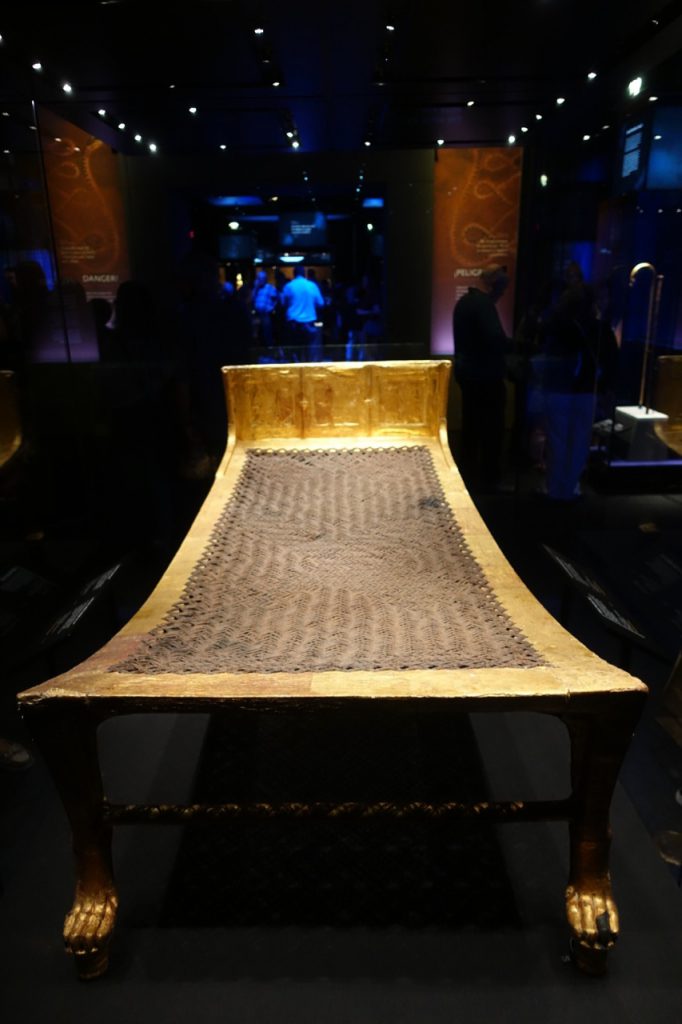
Why see it now? The Egyptian government says this will be the last time the King Tut treasures will tour the world. After the California Science Center, the King Tut exhibit will go to 10 cities in Europe over the next seven years. Ticket sales will help fund the permanent King Tut wing at the Grand Egyptian Museum, which will be the largest archaeological museum in the world and the largest devoted to one culture.
This will be the last chance for your kids to see the treasures of King Tut in the U.S.
The details:
We did the IMAX and King Tut Exhibit Combo, which also gives you free access to the Endeavor exhibit. We stopped into Endeavor and hit a few of the kids’ favorite places in the museum on our way out. We wandered outside for an ice cream and made it back home on the train by 5. A mind-shifting, excellent day.
King Tut: Treasures of the Golden Pharaoh through January 19, 2019
California Science Center / 700 Exposition Park Drive / Los Angeles, CA 90037
Written by Rebecca Anderson

